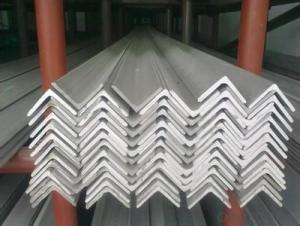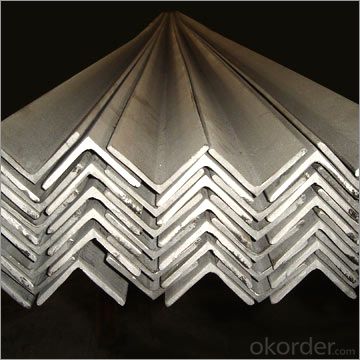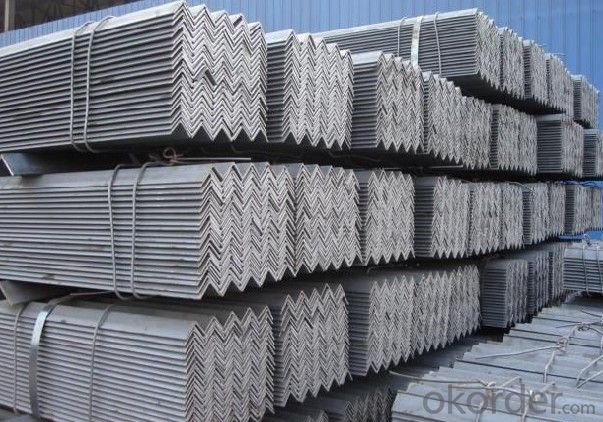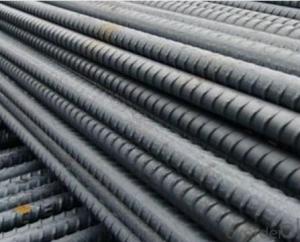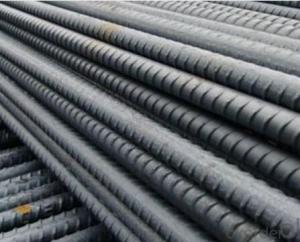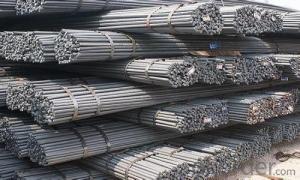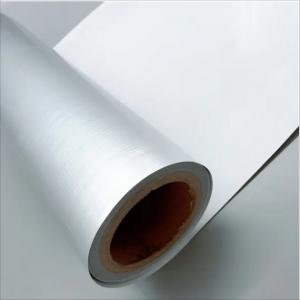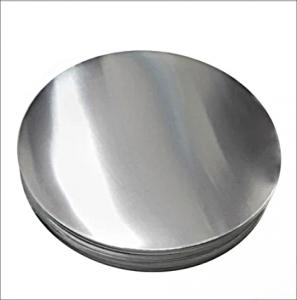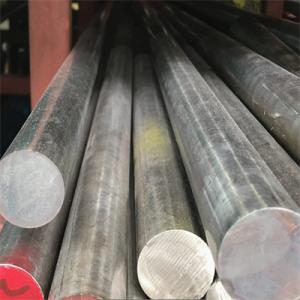Reinforcing Steel Supplies:Deformed Bar Hot Rolled High Quality BS 4449 GB HRB400
- Loading Port:
- Tianjin
- Payment Terms:
- TT OR LC
- Min Order Qty:
- 25 m.t.
- Supply Capability:
- 2000000 m.t./month
OKorder Service Pledge
OKorder Financial Service
You Might Also Like
Specification
Product Description:
OKorder is offering high quality Hot Rolled Steel I-Beams at great prices with worldwide shipping. Our supplier is a world-class manufacturer of steel, with our products utilized the world over. OKorder annually supplies products to European, North American and Asian markets. We provide quotations within 24 hours of receiving an inquiry and guarantee competitive prices.
Product Applications:
Deformed bar is widely used in buildings, bridges, roads and other engineering construction. Big to highways, railways, bridges, culverts, tunnels, public facilities such as flood control, dam, small to housing construction, beam, column, wall and the foundation of the plate, deformed bar is an integral structure material. With the development of world economy and the vigorous development of infrastructure construction, real estate, the demand for deformed bar will be larger and larger
Product Advantages:
OKorder's Steel I-Beams are durable, strong, and resist corrosion, exact size, regular package, chemical and mechanical properties are stable.
Main Product Features:
· Premium quality
· Prompt delivery & seaworthy packing (30 days after receiving deposit)
· Corrosion resistance
· Can be recycled and reused
· Mill test certification
· Professional Service
· Competitive pricing
Product Specifications:
Manufacture: Hot rolled
Grade: BS4449
Certificates: ISO, SGS, BV, CIQ
Diameter: 6mm,8mm,10mm,12mm,14mm,16mm,18mm,20mm,
22mm,25mm,28mm,32mm,36mm,40mm,50mm
Length: 6M, 9M,12M or as required
Packaging: Export packing, nude packing, bundled
Chemical Composition: (Please kindly find our chemistry of our material based on HRB500 as below for your information)
Grade | Technical data of the original chemical composition (%) | ||||||
C | Mn | Si | S | P | V | ||
HRB400 | ≤0.25 | ≤1.60 | ≤0.80 | ≤0.045 | ≤0.045 | 0.04-0.12 | |
Physical capability | |||||||
Yield Strength (N/cm²) | Tensile Strength (N/cm²) | Elongation (%) | |||||
≥400 | ≥570 | ≥14 | |||||
Theoretical weight and section area of each diameter as below for your information:
Diameter(mm) | Section area (mm²) | Mass(kg/m) | Weight of 12m bar(kg) |
6 | 28.27 | 0.222 | 2.664 |
8 | 50.27 | 0.395 | 4.74 |
10 | 78.54 | 0.617 | 7.404 |
12 | 113.1 | 0.888 | 10.656 |
14 | 153.9 | 1.21 | 14.52 |
16 | 201.1 | 1.58 | 18.96 |
18 | 254.5 | 2.00 | 24 |
20 | 314.2 | 2.47 | 29.64 |
22 | 380.1 | 2.98 | 35.76 |
25 | 490.9 | 3.85 | 46.2 |
28 | 615.8 | 4.83 | 57.96 |
32 | 804.2 | 6.31 | 75.72 |
36 | 1018 | 7.99 | 98.88 |
40 | 1257 | 9.87 | 118.44 |
50 | 1964 | 15.42 | 185.04 |
FAQ:
Q1: What makes stainless steel stainless?
A1: Stainless steel must contain at least 10.5 % chromium. It is this element that reacts with the oxygen in the air to form a complex chrome-oxide surface layer that is invisible but strong enough to prevent further oxygen from "staining" (rusting) the surface. Higher levels of chromium and the addition of other alloying elements such as nickel and molybdenum enhance this surface layer and improve the corrosion resistance of the stainless material.
Q2: Can stainless steel rust?
A2: Stainless does not "rust" as you think of regular steel rusting with a red oxide on the surface that flakes off. If you see red rust it is probably due to some iron particles that have contaminated the surface of the stainless steel and it is these iron particles that are rusting. Look at the source of the rusting and see if you can remove it from the surface.
Q3: Can stainless steel rust?
A3: Stainless does not "rust" as you think of regular steel rusting with a red oxide on the surface that flakes off. If you see red rust it is probably due to some iron particles that have contaminated the surface of the stainless steel and it is these iron particles that are rusting. Look at the source of the rusting and see if you can remove it from the surface.

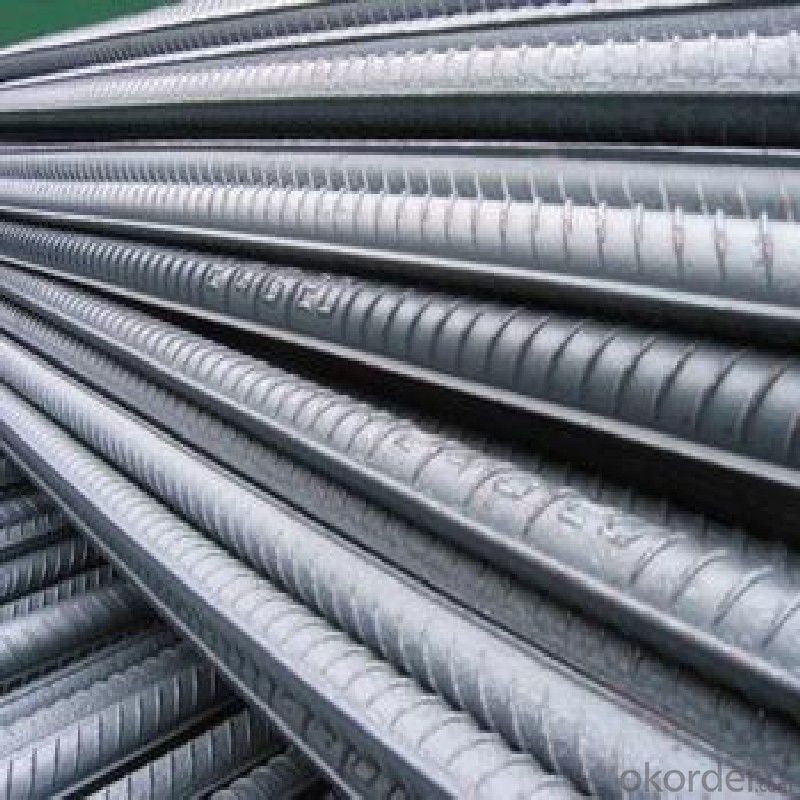
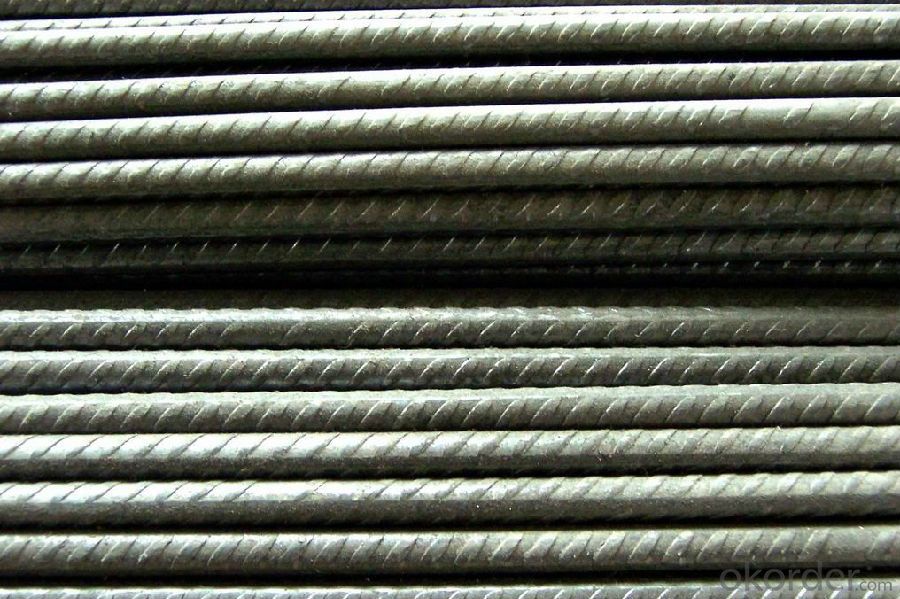
- Q:How do steel rebars provide flexibility to concrete structures?
- Concrete structures can benefit from the flexibility provided by steel rebars in multiple ways. Firstly, the addition of steel rebars reinforces the concrete, enhancing its tensile strength. While concrete is strong in compression, it is weak in tension. By incorporating steel rebars, the concrete becomes more resistant to bending and cracking, as the rebars can absorb the tensile forces that would otherwise cause failure. This reinforcement enables concrete structures to withstand heavier loads and offers flexibility by preventing excessive deformation or collapse. Secondly, steel rebars can be utilized to construct a reinforced concrete frame, which boosts the overall flexibility of the structure. When embedded in the concrete, the rebars form an interconnected network of elements that distribute applied loads more evenly. This network acts as a flexible skeleton capable of adapting to various stresses, such as temperature changes, ground movements, or dynamic forces. As a result, the structure can accommodate minor movements or vibrations without sustaining significant damage. Additionally, steel rebars can be strategically positioned in areas where additional flexibility is required. For instance, in regions prone to seismic activity, rebars can be concentrated in critical areas like building joints or corners. This placement helps dissipate the energy generated during an earthquake, allowing the structure to deform and absorb seismic forces without collapsing. The flexibility provided by steel rebars enhances the seismic resistance of the concrete structure. To summarize, steel rebars contribute to the flexibility of concrete structures by increasing their tensile strength, creating a reinforced concrete frame, and allowing for strategic placement to enhance specific areas of flexibility. This flexibility enables concrete structures to withstand diverse loads, adapt to various stresses, and improve their overall strength and durability.
- Q:How do steel rebars affect the overall construction cost of commercial buildings?
- The overall construction cost of commercial buildings can be significantly affected by steel rebars. These rebars, commonly used to reinforce concrete structures, play a vital role in guaranteeing the building's strength and durability. To begin with, the cost of steel rebars can directly impact the construction budget. Their price varies depending on market conditions and availability, and since they are an essential component in construction, their cost can directly affect the project's expenses. Additionally, the installation of steel rebars adds to the construction cost by requiring skilled labor and specialized equipment. Skilled ironworkers are necessary to accurately place the rebars according to the structural design. The labor cost associated with this skilled work can constitute a significant portion of the overall construction budget. Furthermore, the cost is also influenced by the quantity and density of steel rebars used in the construction. The structural engineer determines the necessary amount and spacing of rebars based on the building's design and load-bearing capacities. In certain cases, more rebars are needed to meet specific safety standards or withstand higher levels of stress. This increased quantity of steel rebars inevitably leads to higher material and labor costs. However, it is essential to note that the use of steel rebars is indispensable in commercial buildings to ensure structural integrity and safety. Although they may contribute to the overall cost, their benefits outweigh the expenses. Steel rebars reinforce concrete, enhancing its tensile strength and ability to withstand external forces like earthquakes, wind, and heavy loads. Ultimately, this results in a longer lifespan for the building and reduces the likelihood of expensive repairs or structural failures in the future. In conclusion, the cost of steel rebars impacts the overall construction cost of commercial buildings due to the cost of the rebars themselves, the labor required for installation, and the quantity needed based on the structural design. Nevertheless, the use of steel rebars is crucial to guarantee the strength and durability of the building, reduce long-term maintenance costs, and ensure the safety of occupants.
- Q:Can steel rebars be used in foundations and footings?
- Yes, steel rebars can be used in foundations and footings. Steel rebars are commonly used to reinforce concrete structures, including foundations and footings, to provide added strength and stability. They help to prevent cracking and increase the structural integrity of the foundation or footing.
- Q:Can steel rebars be used in the construction of offshore oil platforms?
- Yes, steel rebars can be used in the construction of offshore oil platforms. Steel rebars are commonly used in construction to reinforce concrete structures and provide additional strength and durability. In the case of offshore oil platforms, steel rebars are used to reinforce the concrete foundations and structures of the platform, helping to withstand the harsh environmental conditions and the weight of the equipment and infrastructure on the platform. The steel rebars are designed to resist corrosion and are typically coated with epoxy or other protective coatings to prevent rusting in the corrosive marine environment. Additionally, steel rebars can be custom-designed to meet the specific requirements of the offshore oil platform, ensuring they provide the necessary strength and stability.
- Q:What are the guidelines for the proper installation of steel rebars?
- Achieving the structural integrity and durability of reinforced concrete structures relies heavily on the correct installation of steel rebars. To ensure their proper installation, the following guidelines must be followed: 1. Planning and Design: Prior to commencing installation, a detailed plan and design must be established. This involves determining the necessary rebar size, spacing, and configuration based on structural requirements and specifications. It is crucial to consult with structural engineers and adhere to local building codes and regulations. 2. Cutting and Bending: Rebars should be accurately cut and bent in accordance with the design specifications. The use of appropriate tools, such as rebar cutters and benders, is necessary to achieve clean cuts and precise bends. Any rebars that are damaged or corroded should be discarded and replaced. 3. Cleaning and Preparation: The surface of the rebars should be free from contaminants such as rust, oil, dirt, or loose scales before installation. The recommended method for cleaning rebars is using wire brushes or air blasting to ensure proper adhesion between the rebar and concrete. 4. Placement and Positioning: Rebars should be placed and positioned accurately based on the design drawings. They should be securely tied or supported using tie wires or rebar chairs to maintain the desired spacing and alignment. Splices should be made according to the design requirements and properly lapped to ensure continuity and strength. 5. Concrete Cover: Adequate concrete cover is crucial to protect the rebars from corrosion and provide fire resistance. The concrete cover thickness should meet the design specifications and local building codes. Proper spacing between rebars and formwork should be maintained to allow for proper concrete flow and consolidation. 6. Anchorage and Embedment: Sufficient anchorage and embedment of rebars are essential for load transfer and structural stability. Special attention should be given to providing proper hooks, bends, or mechanical anchorage at the ends of rebars as required by the design. The rebars should be appropriately embedded into adjacent concrete elements to achieve the desired bond strength. 7. Inspection and Quality Control: Regular inspection should be conducted throughout the installation process to ensure compliance with design specifications and quality standards. Any deviations or defects should be promptly identified and rectified. It is important to document the installation process and maintain proper records for future reference. By adhering to these guidelines, the proper installation of steel rebars can be accomplished, guaranteeing the structural strength, longevity, and safety of reinforced concrete structures.
- Q:Can steel rebars be used in structures with high resistance to creep?
- Steel rebars are suitable for structures that require high resistance to creep. They are widely utilized in reinforced concrete structures, contributing to their strength and durability. Creep refers to the gradual deformation of a material when subjected to continuous stress over time. Although steel does experience some creep, its creep rate is relatively low compared to materials like concrete or timber. Moreover, incorporating rebars in reinforced concrete structures aids in load distribution and mitigates the impact of creep by enhancing rigidity and minimizing stress on the concrete. Consequently, steel rebars can be efficiently employed in structures that demand resistance to creep, provided that they are appropriately designed and installed.
- Q:What is the impact of steel rebars on the carbon footprint of a structure?
- The use of steel rebars in construction has a significant impact on the carbon footprint of a structure. Steel production is known to be a highly carbon-intensive process, contributing to greenhouse gas emissions and climate change. The extraction and processing of iron ore, along with the energy-intensive processes involved in converting it into steel, result in substantial carbon dioxide (CO2) emissions. Steel rebars are typically used to reinforce concrete structures, such as buildings, bridges, and highways. The production of cement, a key component of concrete, is also a major contributor to carbon emissions. Thus, the carbon footprint of a structure is influenced by both the steel production and the concrete manufacturing processes. However, it is important to note that steel rebars can also have a positive impact on the carbon footprint of a structure. Steel is a highly durable material, with a long lifespan that can exceed the lifespan of the structure itself. This durability reduces the need for frequent maintenance, repairs, and replacements, which would otherwise consume additional resources and emit more carbon. Furthermore, steel rebars can enhance the structural strength and resilience of a building, allowing it to withstand extreme weather events and seismic activities. This increased durability can extend the lifespan of the structure, reducing the need for new construction and associated carbon emissions in the long run. To mitigate the carbon footprint of steel rebars, efforts are being made to improve the efficiency of steel production processes, such as adopting cleaner technologies and using recycled steel. Additionally, there is a growing trend towards incorporating sustainable materials, like bamboo or fiber-reinforced polymers, as alternatives to steel rebars in construction. In conclusion, while the production of steel rebars has a significant carbon footprint, their use in construction can contribute to the overall sustainability of a structure by providing durability and reducing the need for frequent replacements. However, it is crucial to continually explore and implement more sustainable alternatives to steel rebars to further minimize the carbon impact of construction.
- Q:Can steel rebars be used in the construction of shopping malls and commercial buildings?
- Yes, steel rebars can be used in the construction of shopping malls and commercial buildings. Steel rebars provide strength and durability to the structure, making them an essential component in reinforced concrete construction. They help in reinforcing the concrete and enhancing the overall structural integrity of the building, ensuring its safety and longevity.
- Q:Can steel rebars be used in combination with other reinforcement materials?
- Yes, steel rebars can be used in combination with other reinforcement materials such as fibers, wire mesh, or carbon fiber sheets to enhance the overall strength and durability of concrete structures. This combination of reinforcement materials provides a more effective solution for reinforcing concrete and can meet specific project requirements.
- Q:What is the average lifespan of steel rebars in a concrete structure?
- The average lifespan of steel rebars in a concrete structure can vary depending on various factors such as the quality of the rebars, the type of concrete used, the environmental conditions, and the level of maintenance. However, under normal circumstances, steel rebars in a well-constructed and maintained concrete structure can last for several decades or even longer.
1. Manufacturer Overview |
|
|---|---|
| Location | |
| Year Established | |
| Annual Output Value | |
| Main Markets | |
| Company Certifications | |
2. Manufacturer Certificates |
|
|---|---|
| a) Certification Name | |
| Range | |
| Reference | |
| Validity Period | |
3. Manufacturer Capability |
|
|---|---|
| a)Trade Capacity | |
| Nearest Port | |
| Export Percentage | |
| No.of Employees in Trade Department | |
| Language Spoken: | |
| b)Factory Information | |
| Factory Size: | |
| No. of Production Lines | |
| Contract Manufacturing | |
| Product Price Range | |
Send your message to us
Reinforcing Steel Supplies:Deformed Bar Hot Rolled High Quality BS 4449 GB HRB400
- Loading Port:
- Tianjin
- Payment Terms:
- TT OR LC
- Min Order Qty:
- 25 m.t.
- Supply Capability:
- 2000000 m.t./month
OKorder Service Pledge
OKorder Financial Service
Similar products
New products
Hot products
Hot Searches
Related keywords
